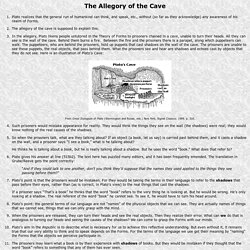

Think Like a Shrink. Yes, you too can see through the defenses people hide behind. To guide you, just consult the handy primer below. Put together by psychiatrist Emanuel H. Rosen, it distills years of Freudian analytical training into a few simple principles that make sense of our psyches. I have always thought it horribly unfortunate that there is such a tremendous gap between psychiatry and popular culture. Psychiatrists are regularly vilified in entertainment, media, and common thought, and our patients are regularly stigmatized. To some degree, we've gotten just what we deserve.
Most patients come to psychiatrists because they recognize that, to some degree, their perceptions contain some distortions. In my practice, I've engaged in a kind of educational psychotherapy, explaining simply to patients what they are doing and why they are doing it. Ideas and principles can be introduced directly without the jargon psychiatrists normally hide behind in professional discussions. 1. 2. 3. 4. 5.
P E R C E I V I N G R E A L I T Y. An Essay by Einstein. "How strange is the lot of us mortals!

Each of us is here for a brief sojourn; for what purpose he knows not, though he sometimes thinks he senses it. But without deeper reflection one knows from daily life that one exists for other people -- first of all for those upon whose smiles and well-being our own happiness is wholly dependent, and then for the many, unknown to us, to whose destinies we are bound by the ties of sympathy. A hundred times every day I remind myself that my inner and outer life are based on the labors of other men, living and dead, and that I must exert myself in order to give in the same measure as I have received and am still receiving... "I have never looked upon ease and happiness as ends in themselves -- this critical basis I call the ideal of a pigsty.
The ideals that have lighted my way, and time after time have given me new courage to face life cheerfully, have been Kindness, Beauty, and Truth. "My political ideal is democracy. The Experience and Perception of Time. What is ‘the perception of time’?

The very expression ‘the perception of time’ invites objection. Insofar as time is something different from events, we do not perceive time as such, but changes or events in time. But, arguably, we do not perceive events only, but also their temporal relations. So, just as it is natural to say that we perceive spatial distances and other relations between objects (I see the dragonfly as hovering above the surface of the water), it seems natural to talk of perceiving one event following another (the thunderclap as following the flash of lightning), though even here there is a difficulty. For what we perceive, we perceive as present—as going on right now. Kinds of temporal experience There are a number of what Ernst Pöppel (1978) calls ‘elementary time experiences’, or fundamental aspects of our experience of time. Duration The inference model may be plausible enough when we are dealing with distant events, but rather less so for much more recent ones.
Allegory of the Cave. Plato realizes that the general run of humankind can think, and speak, etc., without (so far as they acknowledge) any awareness of his realm of Forms.

The allegory of the cave is supposed to explain this. In the allegory, Plato likens people untutored in the Theory of Forms to prisoners chained in a cave, unable to turn their heads. All they can see is the wall of the cave. Behind them burns a fire. Between the fire and the prisoners there is a parapet, along which puppeteers can walk. From Great Dialogues of Plato (Warmington and Rouse, eds.) Here are some students’ illustrations of Plato’s Cave Go back to lecture on the Phaedo Go back to lecture on the “One Over Many” Argument Go to next lecture on Criticism of Forms. The World of 100. There is no doubting the skill of designer Toby Ng.

His designs have won him numerous accolades including the Red Dots Awards, International Design Awards, and the Hong Kong International Poster Triennial Awards among others. One of his projects, called World of 100 answers the question: If the world were a village of 100 people, what would its composition be? The answer consists of twenty brilliantly designed posters based on statistics about the population around the world under different classifications. The stats are more powerful because of Ng's illustrations. He uses vibrant, bold colors combined with crisp, clean lines. Toby Ng's website via [Brain Pickings] Views: 30077. Untitled Document. Masculine, feminine or human?
Posted on SleptOn.com, June 2, 2008. by Robert Jensen In a guest lecture about masculinity to a college class, I ask the students to generate two lists that might help clarify the concept. For the first, I tell them to imagine themselves as parents whose 12-year-old son asks, “Mommy/daddy, what does is mean to be a man?” The list I write on the board as they respond is not hard to predict: To be a man is to be strong, responsible, loving. Oliver Sacks: What hallucination reveals about our minds. The Size Of Our World.